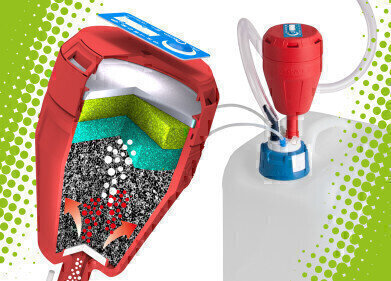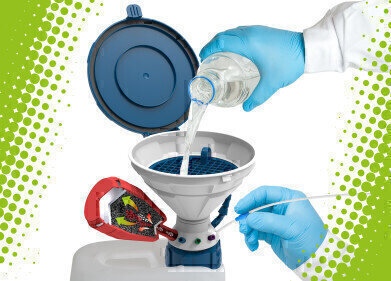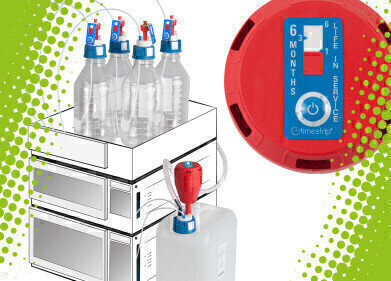Chromatography
The safest Filter for HPLC and Solvent Waste!
Oct 05 2021
Do you collect your solvents safely, and in line with the latest safety standards? The SCAT exhaust filter 3.0 blocks hazardous solvent vapours, and brings state-of-the-art safety to your lab. Thanks to 3 layers of different active carbons, it protects workers and environment from evaporating solvents, acids and alkalis.
SCAT exhaust filters block off harmful vapours and ensure for safe pressure equalization in the waste containers of HPLC systems. Our core active carbon has been optimised for taking up organic solvent vapours and has been tested, using official ASTM/DIN/ISO test methods.
Especially in order to bind and remove alkaline and acidic gases, there are now two further layers of active carbon in the filters: the first contains a reactive impregnation which converts alkaline gases, by means of „chemisorption“, and then binds them as „fully reacted“ components. The second layer also consists of a highly active carbon, this one having been optimised for binding acidic gaseous components.
The active surface area has been increased by no less than 25%, i.e. from 1,200 m²/g to 1,500 m²/g. As per the ASTM D3467 Norm, the CTC adsorption value achieved by the new active carbon, Generation 3.0, is now 90% (hitherto 70%).
Traditionally-used active carbon (used for many years now), which however is not ideal for filtering out acids and alkalis, as it often only does so insufficiently. Its adsorptional efficiency („CTC value“) is comparitively low, as is its active surface area (600 – 1,200 m²/g).
With their 3 layers, the Generation 3.0 exhaust filters are able to remove more gaseous components produced during HPLC work than any others available on the market. The main advantage for the user is that only a single filter type need be employed, for all applications – even when methodsor solvent compositions used are altered.
The laboratory operator thereby achieves not only the highest possible standard of working safety and environmental protection, but also benefits from predictably high levels of efficiency, and by enjoying the associated cost savings involved – work in the laboratory is thus made „doubly“ safe.
Digital Edition
ILM 49.5 July
July 2024
Chromatography Articles - Understanding PFAS: Analysis and Implications Mass Spectrometry & Spectroscopy Articles - MS detection of Alzheimer’s blood-based biomarkers LIMS - Essent...
View all digital editions
Events
Jul 28 2024 San Diego, CA USA
Jul 30 2024 Jakarta, Indonesia
Jul 31 2024 Chengdu, China
ACS National Meeting - Fall 2024
Aug 18 2024 Denver, CO, USA
Aug 25 2024 Copenhagen, Denmark






24_06.jpg)













